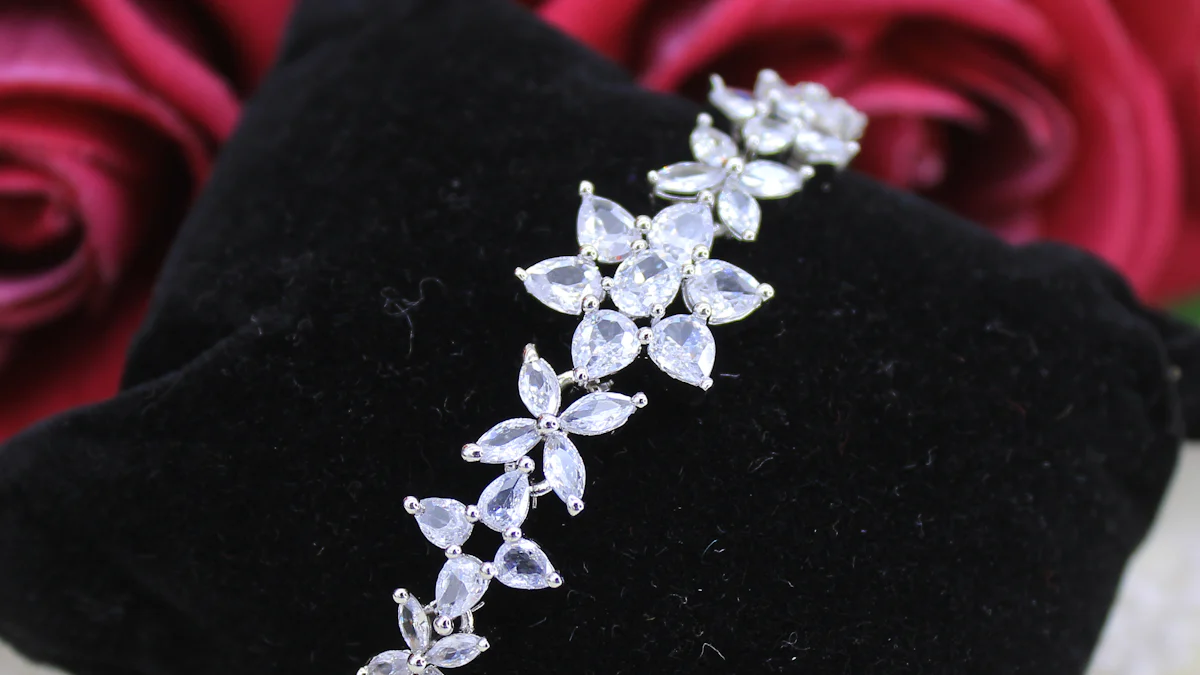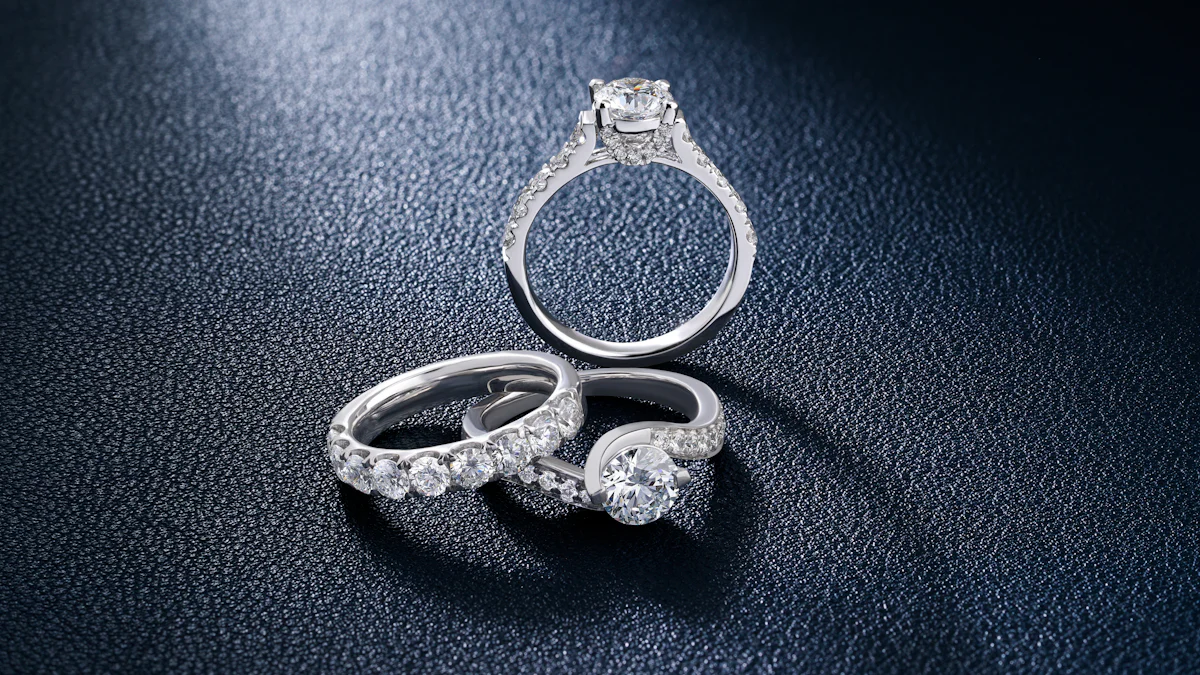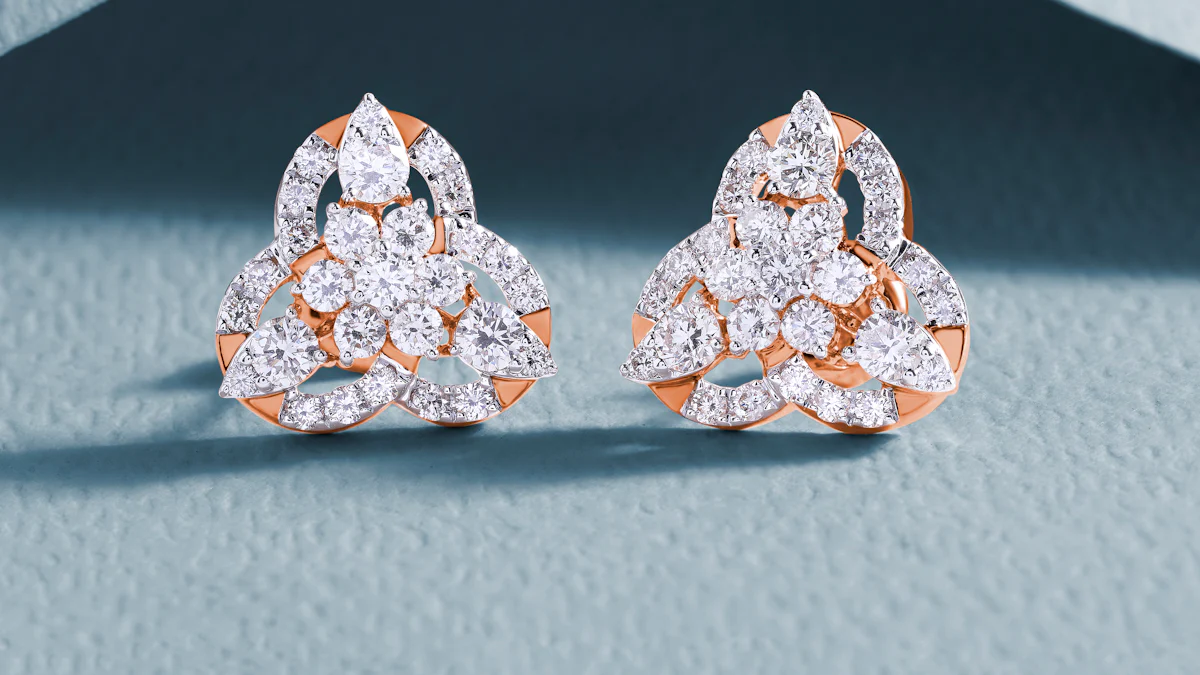What is the Average Cost of One Carat Diamond?

When you're in the market for a diamond, you might wonder how much is one carat diamond. The price can vary significantly, ranging from $1,000 to over $12,000. This wide range depends on several factors. The cut, clarity, color, and shape of the diamond play crucial roles in determining its cost. For instance, a well-cut diamond with high clarity and color grades will command a higher price. On the other hand, diamonds with lower grades in these areas might be more budget-friendly. Understanding these factors can help you make an informed decision when purchasing a diamond.
Key Takeaways
- Understand the 4 Cs (Cut, Color, Clarity, Carat) as they are crucial in determining a diamond's price and quality.
- Consider the diamond's shape; popular shapes like round diamonds tend to be more expensive due to demand and cutting waste.
- Explore both natural and lab-grown diamonds; lab-grown options are often more affordable and ethically sourced.
- Always request a diamond certification from reputable labs to ensure you know the true quality of the diamond you're purchasing.
- Compare prices from various retailers, both online and in-store, to find the best deal and avoid overpaying.
- Prioritize the factors that matter most to you, whether it's sparkle, size, or budget, to make an informed purchase.
- Avoid common mistakes like overlooking certification and focusing solely on carat weight; balance all the 4 Cs for the best value.
Factors Influencing Diamond Pricing
When you're considering how much is one carat diamond, several factors come into play. Let's dive into these elements to help you understand what affects the price.
The 4 Cs of Diamonds
The 4 Cs are the cornerstone of diamond pricing. Each C plays a vital role in determining the value of a diamond.
Cut
The cut of a diamond refers to how well it has been shaped and faceted. A well-cut diamond reflects light beautifully, enhancing its sparkle. You might notice that diamonds with excellent cuts often cost more because they maximize brilliance.
Color
Diamonds come in various colors, but the most valuable ones are colorless. The less color a diamond has, the higher its price. When you look at diamonds, you'll see that those with a pure, clear appearance tend to be more expensive.
Clarity
Clarity measures the presence of imperfections or inclusions in a diamond. Fewer inclusions mean a clearer diamond, which usually commands a higher price. When choosing a diamond, consider how much clarity matters to you.
Carat
Carat weight is often the first thing people think about when asking how much is one carat diamond. Larger diamonds are rarer and thus more expensive. However, two diamonds of the same carat weight can have different prices based on the other Cs.
Diamond Shape
The shape of a diamond also influences its price. Some shapes are more popular and require more skill to cut, affecting their cost.
Round
Round diamonds are the most popular and often the most expensive. Their brilliance and classic appeal make them highly sought after. Due to their popularity and the waste involved in cutting, round diamonds typically cost more than other shapes.
Princess
Princess-cut diamonds offer a modern look with their square shape. They are generally less expensive than round diamonds but still provide excellent sparkle.
Other Shapes
Other shapes, like oval or marquise, can be more budget-friendly. These fancy shapes often cost less than round diamonds due to lower demand and less cutting waste.
Diamond Origin
Where a diamond comes from can also impact its price. Let's explore the differences between natural and lab-grown diamonds and the importance of ethical sourcing.
Natural vs. Lab-Grown
Natural diamonds form over millions of years, while lab-grown diamonds are created in a controlled environment. Lab-grown diamonds are usually more affordable, offering a cost-effective alternative without compromising quality.
Ethical Sourcing
Ethical sourcing ensures that diamonds are mined and traded responsibly. Diamonds with ethical certifications might cost more, but they guarantee that your purchase supports fair labor practices and environmental sustainability.
Understanding these factors will help you make an informed decision when purchasing a diamond. By considering the 4 Cs, shape, and origin, you can find a diamond that fits your budget and preferences.
Sample Price Ranges for Different Diamond Grades

When you're shopping for a diamond, understanding the price ranges for different grades can help you make an informed decision. Let's break down the typical costs for high-quality, mid-range, and budget-friendly diamonds.
High-Quality Diamonds
High-quality diamonds often come with a higher price tag due to their superior characteristics. These diamonds usually have excellent cuts, high clarity, and near-colorless grades. For instance, a 1-carat diamond with an E color and VVS1 clarity might cost around $8,664. If you opt for a diamond with slightly lower clarity, like VS1, the price could drop to approximately $5,910. In brick-and-mortar stores, you might find high-grade 1-carat diamond rings priced between $4,500 and $6,500. However, purchasing online can sometimes offer savings, with prices ranging from $3,000 to $4,000.
Mid-Range Diamonds
Mid-range diamonds strike a balance between quality and affordability. These diamonds often have good cuts, decent clarity, and slightly more color. A 1-carat diamond with F color and VS1 clarity typically falls within the $5,500 to $8,200 range. This category offers a great option if you're looking for a beautiful diamond without breaking the bank. You can expect to pay around $4,000 to $5,000 for a better-than-average quality, unbranded, 1-carat natural diamond.
Budget-Friendly Diamonds
If you're on a tighter budget, there are still plenty of options available. Budget-friendly diamonds might have lower clarity or more noticeable color, but they can still be stunning. A 1-carat diamond with I color and SI1 clarity might cost around $4,971. These diamonds provide an affordable way to enjoy the beauty of a diamond without the premium price. You can find diamonds in this category starting at about $1,000, depending on the specific characteristics.
Understanding these price ranges can help you determine how much is one carat diamond and find the perfect stone that fits your budget and preferences. Whether you're looking for a high-quality gem or a more budget-friendly option, there's a diamond out there for you.
How to Ensure the Best Value When Purchasing a Diamond
When you're on the hunt for a diamond, getting the best value is crucial. Here are some tips to help you make a smart purchase.
Understanding Certification
First, let's talk about certification. A diamond certificate, also known as a grading report, provides an unbiased assessment of a diamond's quality. It details the 4 Cs: cut, color, clarity, and carat weight. You should always ask for a certificate from a reputable gemological laboratory, like the Gemological Institute of America (GIA) or the American Gem Society (AGS). This document ensures that you know exactly what you're buying. Without it, you might end up paying more than the diamond is worth.
Comparing Prices from Different Retailers
Next, compare prices from different retailers. Don't settle for the first jeweler you visit. According to a survey, many respondents bought from the only jeweler they visited, which might not always lead to the best deal. By shopping around, you can find competitive prices and possibly negotiate a better deal. Online retailers often offer lower prices due to reduced overhead costs. However, visiting a physical store allows you to see the diamond in person. Weigh the pros and cons of each option to find the best price.
Evaluating the Importance of Each of the 4 Cs
Finally, evaluate the importance of each of the 4 Cs based on your preferences. For instance, if sparkle is your top priority, focus on the cut. A well-cut diamond reflects light beautifully, enhancing its brilliance. If size matters more, you might prioritize carat weight. Remember, over 60% of consumers prefer round brilliant diamonds for their sparkle and classic appeal. Consider what matters most to you and adjust your budget accordingly. This approach helps you find a diamond that meets your needs without overspending.
By understanding certification, comparing prices, and evaluating the 4 Cs, you can ensure you get the best value for your diamond purchase. Whether you're buying online or in-store, these strategies will guide you in making an informed decision.
Tips for Buying Diamonds Online vs. In-Store

When you're ready to buy a diamond, you might wonder whether to shop online or visit a store. Each option has its perks and drawbacks. Let's explore both to help you decide.
Pros and Cons of Online Shopping
Shopping for diamonds online can be convenient and cost-effective. Here are some reasons why you might consider it:
-
Lower Prices: Online retailers often offer better deals. They don't have the overhead costs of physical stores. A study commissioned by Blue Nile found that Americans overpay by up to 72% at luxury jewelry chains compared to online prices. This means you can save money by shopping online.
-
Wide Selection: Online stores provide access to a vast inventory. You can browse through countless options without leaving your home. This variety allows you to find the perfect diamond that fits your preferences and budget.
-
Convenience: Shopping online lets you compare prices and features easily. You can do this at any time, from anywhere. This flexibility makes it easier to find the best deal.
However, online shopping has its challenges:
-
Lack of Physical Inspection: You can't see the diamond in person. This makes it hard to assess its true quality. Online retailers list information, but they don't stock diamonds. When you buy, they ship it from the supplier. This means you rely on descriptions and images.
-
Limited Personal Assistance: You might miss out on expert advice. In-store jewelers can guide you through the buying process. Online, you might not get the same level of personalized service.
Benefits of In-Store Purchases
Buying diamonds in-store offers a different experience. Here are some benefits:
-
Hands-On Inspection: You can see and touch the diamond. This helps you evaluate its sparkle and quality. Seeing the diamond in person ensures you know exactly what you're getting.
-
Expert Guidance: Jewelers provide valuable insights. They can explain the 4 Cs and help you choose the right diamond. This personalized service can be reassuring, especially if you're new to buying diamonds.
-
Immediate Gratification: You can take the diamond home right away. There's no waiting for shipping. This instant satisfaction can be appealing if you're eager to have the diamond.
In-store shopping has its downsides too:
-
Higher Prices: Physical stores often charge more. They have higher operating costs, which they pass on to customers. This means you might pay a premium for the same diamond you could find online for less.
-
Limited Selection: Stores might not have as many options. Their inventory is restricted by space. This limits your choices compared to online shopping.
Common Mistakes to Avoid When Buying a Diamond
When you're on the hunt for the perfect diamond, it's easy to make a few missteps. Let's explore some common mistakes and how you can avoid them.
Overlooking Certification
You might think a diamond looks stunning, but without proper certification, you can't be sure of its true quality. A diamond certificate, often called a grading report, provides an unbiased evaluation of the diamond's characteristics. Always ask for a certificate from a reputable gemological laboratory like the Gemological Institute of America (GIA) or the American Gem Society (AGS). This document ensures you know exactly what you're buying. Without it, you risk paying more than the diamond is worth.
Ignoring the Importance of Cut
The cut of a diamond significantly impacts its sparkle and brilliance. You might focus on size or color, but a poorly cut diamond won't reflect light well. This can make even a large or colorless diamond appear dull. Prioritize the cut when selecting a diamond. A well-cut diamond will dazzle and catch the eye, making it a worthwhile investment. Remember, a diamond's beauty often lies in its ability to shine.
Focusing Solely on Carat Weight
Carat weight often grabs attention because it indicates the size of the diamond. However, focusing only on carat weight can lead to disappointment. A larger diamond with poor cut, color, or clarity might not look as impressive as a smaller, well-proportioned stone. Balance carat weight with the other Cs—cut, color, and clarity—to find a diamond that truly stands out. Consider what matters most to you and choose a diamond that meets your preferences without compromising on quality.
By avoiding these common mistakes, you can make a more informed decision when purchasing a diamond. Keep these tips in mind to ensure you find a gem that not only fits your budget but also shines beautifully.
Understanding how much is one carat diamond involves more than just looking at the price tag. The cost varies significantly based on factors like cut, clarity, color, and carat weight. By grasping these elements, you can make informed decisions and find a diamond that fits your budget and preferences. To ensure the best value, always check for certification, compare prices across different retailers, and prioritize the 4 Cs according to your needs. Whether you shop online or in-store, these tips will guide you in purchasing a diamond that truly shines.
FAQ
How are diamonds priced?
Diamonds get their price based on several factors. These include quality, carat weight, cut, clarity, and color. Each of these elements plays a role in determining the diamond's overall value. A well-cut diamond with high clarity and color grades will typically cost more.
What factors influence the price of a 1/2 carat diamond?
The price of a 1/2 carat diamond depends on its cut, clarity, color, and carat weight. Even though it's smaller than a one-carat diamond, these factors still significantly impact its cost. A diamond with better grades in these areas will usually be more expensive.
How do the 4Cs affect the price of a natural diamond?
The 4Cs—carat, cut, color, and clarity—are crucial in determining a natural diamond's price. They assess the diamond's rarity and value. For instance, a diamond with a higher carat weight, excellent cut, colorless appearance, and few inclusions will command a higher price.
What makes diamonds expensive?
Diamonds are pricey due to their rarity and the 4Cs. The story of their rarity in nature also adds to their allure and cost. High-quality diamonds are rare, making them more valuable and expensive.
What factors influence diamond prices?
Diamond prices are influenced by clarity, cut, color, and other aspects. Each factor contributes to the diamond's overall appeal and value. A diamond with superior characteristics in these areas will generally have a higher price tag.
See Also
Understanding the Cost of a 2 Carat Lab Diamond
Exploring the Price of a 3 Carat Lab Diamond
Comparative Prices for All Around Diamond Rings

